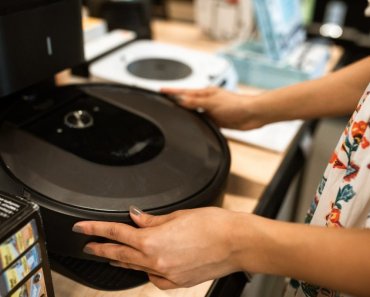If you’re becoming a foster “parent” for a shelter or rescue dog, know that training is part of the package. Following these training and behavior tips for foster dogs results in a better-adjusted canine that’s more adoptable and has a higher chance of finding a forever home.
Fostering a shelter or rescue dog is one of the most rewarding things you can do. It’s also a responsibility, because you’re acting as the transition point between the shelter environment and the dog’s forever home. Training is therefore an important part of the equation. The following training and behavior tips will help ensure the dog you’re caring for has a better chance of being adopted into a permanent home.
Each dog has a particular personality that is a product of genetics, experience (past trauma, human interactions, etc.) and a natural instinct to survive. With this in mind, you can implement training techniques and concepts to help an individual foster dog build trust, confidence and stability in his temporary home.
1. CONSIDER YOUR HOME ENVIRONMENT
When a dog enters your home as a foster, the first thing to consider is the environment. Is it conducive to the dog’s well-being — mentally, physically and emotionally? A quiet, stress-free environment and regular routine are best, along with adequate space for physical activity, and for rest. Too much noise, disruption or chaos are counterproductive.
Also be sure to dog-proof your home by removing things that could be harmful to her — e.g. medications, candy, plastic bags, etc. — and putting them well out of reach.
2. LET THE DOG SNIFF…A LOT!
Dogs are basically walking noses. They’re believed to have up to 300 million olfactory receptors in their noses, compared to our mere six million, so it is almost impossible for us to understand just how large a role the power of scent plays in their daily lives.
Upon bringing your foster pup home, give her plenty of time to sniff around. Leave the leash on her and simply allow her to sniff, sniff, sniff. You may use the leash to gently guide her through the house, praising and rewarding her for any positive interactions with her new environment.
You can also use this opportunity to set healthy boundaries that help prevent her from jumping on furniture and people, or having bathroom incidents in the house. Another ultra-rewarding experience for the dog is time on a long lead (ten to 15 feet) while she explores the environment outside your home. Be sure to supervise her when she’s outdoors.
3. FIND OUT WHAT MOTIVATES HIM
Taking a dog’s personality, genetics, and history into consideration is helpful when trying to learn what motivates him. For example, if your foster pup has any retriever in him, there’s a good chance he’ll be motivated by a good game of fetch. If he’s part pitbull, he’ll likely be more motivated by tugging games. Is he a hound mix? Then perhaps scent-finding games are his motivation. Whatever the case, each dog is interested in different activities.
Luckily for us, almost all dogs are motivated by food, so you can use healthy treats to teach, shape, and boost your foster dog’s confidence and trust in the new people in his life. Try to have fun figuring out what most motivates the particular dog you are fostering, then use it to build him up.
4. MOVE CALMLY AND PROVIDE A SAFE SPACE
Since dogs are masters at studying and responding to body language, be sure to present a calm and nurturing demeanor. Keep your body movements relaxed and quiet, and avoid excessive noise.
Set the dog up with her own space where she can feel safe when sleeping, enjoying a toy, or having some quiet time. You can use a baby gate for a doorway or, if the dog is crate trained, allow her time each day to rest in quietly in this space.
5. REWARD, REWARD, REWARD!
Take every opportunity you can to reward your foster dog for great behavior. Rewards come in many forms, not just food. For example, if the dog takes it upon himself to relax, lie in his bed, or engage with a toy, be sure to praise him for it.
If he already knows some of the basics, such as “sit”, use this to engage him before going for a walk or feeding him. By asking the dog to “sit” before leaving the house or giving him dinner, you’re actually rewarding him for the behavior with the act of walking or eating. Simply put, any time you feel the dog is presenting awesome behavior, let him know how great he is doing!
6. PAY ATTENTION TO HOW MUCH AFFECTION YOU GIVE HER
Human beings love, love, love to pet dogs! Showing affection in the form of hugging and holding is something we know from birth; after all, we carry our babies around in our arms. Dogs, however, do not. With this in mind, it’s important to remember that hugging and cuddling may feel overbearing and downright annoying to a dog.
holding is something we know from birth; after all, we carry our babies around in our arms. Dogs, however, do not. With this in mind, it’s important to remember that hugging and cuddling may feel overbearing and downright annoying to a dog.
Try to be mindful of just how often you reach out to pet your new foster pup. Do you find yourself patting her when she’s peacefully sleeping? When you return after an outing, do you make a big fuss of her, petting her incessantly and bringing her into an overexcited state?
Look for signs of stress in the dog when approaching or attempting to pet her, such as excessive yawning and lip licking. Really tune in to not only what the dog is doing — but more importantly, what you are doing! You’d be surprised how often we pet or hug our dogs, believing they enjoy it when they’re actually just choosing to tolerate it for the sake of appeasing us.
Taking on a foster pup is one of the most helpful and noble things a dog lover can do. You’re providing that dog with an amazing opportunity to grow and develop, and to transition from the shelter environment to a permanent home. Of course, if you fall in love with him, that permanent home could end up being yours, in which case you are now a “foster fail”. Congratulations!



























